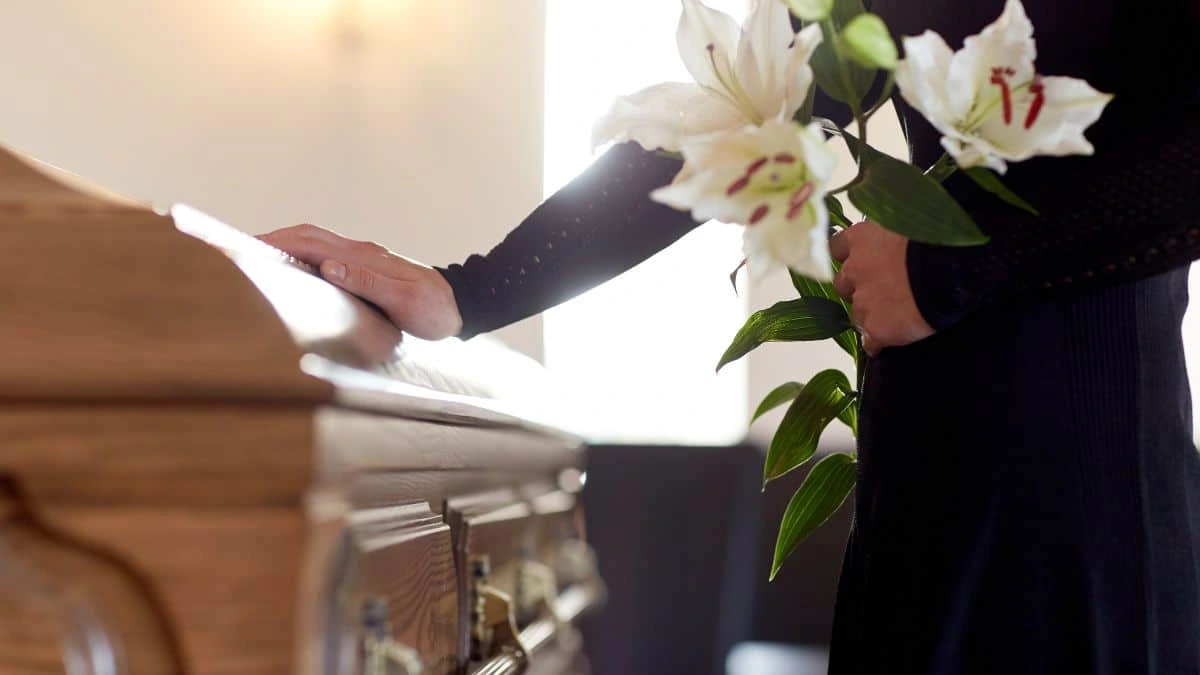
When we think about funerals, we often associate them with grief and loss. However, these ceremonies are rich in history, culture, and tradition, reflecting the diverse ways societies honor and remember their loved ones. From unique rituals around the world to fascinating historical practices, funerals offer a window into human beliefs about life, death, and what lies beyond. In this blog post, we will explore 25 interesting facts about funerals that might surprise you, broaden your understanding, and perhaps even inspire new perspectives on how we commemorate those who have passed. Join us as we delve into the intriguing world of funerary customs and discover the stories behind the solemnity.
Etymology of “Funeral”: The term “funeral” derives from the Latin word “funus,” which encompasses meanings related to death and funeral rites. This reflects the solemnity and cultural significance of the rituals surrounding death. Funerals serve as a way for communities to honor the deceased, providing a structured environment for mourning and remembrance.
First Recorded Funeral: The earliest known funeral practices date back to approximately 300,000 years ago, associated with Neanderthals. Archaeological evidence from burial sites indicates that these early humans intentionally buried their dead, often with grave goods, suggesting a belief in an afterlife or respect for the deceased. This practice marks one of the earliest forms of human ritual and social behavior surrounding death.
Ancient Egyptian Funerals: Funerals in ancient Egypt were elaborate affairs, deeply rooted in their beliefs about the afterlife. The process often included mummification, which preserved the body for eternity, as they believed that the soul would need it in the afterlife. Tombs were filled with items like food, jewelry, and other goods to accompany the deceased, illustrating the Egyptians’ complex spiritual beliefs and the importance of honoring the dead.
Average Funeral Costs: In the United States, the average cost of a funeral ranges from approximately $7,000 to $12,000. This price can vary significantly based on factors such as location, type of service, and specific choices made by the family, including casket selection and additional services like embalming or memorial services. The financial aspect of funerals often places a burden on families during an already difficult time.
Flowers at Funerals: The tradition of using flowers in funerals has its roots in the Victorian era, where floral arrangements symbolized various sentiments, including love, respect, and mourning. Flowers were believed to help mask the odor of decay, but more importantly, they served as a visual representation of the beauty of life and the fragility of existence. Different flowers carry specific meanings, allowing mourners to convey their emotions through their selections.
Japanese Funeral Customs: In Japan, funerals are often conducted in a Buddhist style, which can involve multiple ceremonies spanning several days. The primary service, called “otsuya,” is held the night before the cremation, allowing family members to pay their respects. The body is usually cremated, and the ashes are placed in an urn, which is then interred. This process reflects the cultural significance of death and the belief in the cycle of life and rebirth.
Wearing Black at Funerals: The tradition of wearing black at funerals is believed to have originated in ancient Rome, where black was associated with mourning and loss. Over time, this custom spread to various cultures and became a standard practice in Western societies. Wearing black signifies respect for the deceased and a visual representation of grief, helping to create a solemn atmosphere during the funeral service.
Ghana’s Colorful Coffins: In Ghana, funerals are vibrant celebrations of life rather than solely mourning events. Colorful coffins, often designed to reflect the deceased’s profession or interests, are used to express individuality and honor their legacy. This practice emphasizes the belief that death is a transition rather than an end, and the funerals serve as a way to celebrate the deceased’s life and contributions to the community.
First Known Hearse: The first documented use of a hearse dates back to the 17th century in France. Originally, hearses were simple structures used to transport the deceased, but over time, they evolved into more elaborate vehicles, often decorated and designed to reflect the social status of the deceased. The hearse serves a practical purpose in the funeral process, allowing for dignified transport to the burial site.
Cremation Rates in the U.S.: As of 2020, the cremation rate in the United States exceeded 50%, reflecting a significant shift in societal attitudes toward death and burial practices. Factors contributing to this trend include cost considerations, environmental concerns, and personal preferences for simplicity. Cremation allows for various memorial options, including keeping ashes in an urn, scattering them in meaningful locations, or incorporating them into memorial items.
Wakes: The term “wake” originates from the practice of keeping vigil over the deceased before burial. Traditionally, family and friends would gather to pay their respects and watch over the body, often believing that the deceased’s spirit might linger nearby. This practice allowed mourners to share stories, offer comfort to one another, and participate in rituals that honored the deceased. Wakes can vary in length and formality, sometimes including prayers or readings, and serve as an important communal aspect of mourning.
Day of the Dead: The Day of the Dead (Día de los Muertos) is a Mexican celebration that honors deceased loved ones, blending indigenous traditions with Catholic influences. Celebrated on November 1st and 2nd, families create altars (ofrendas) adorned with photographs, favorite foods, and items that represent the deceased. This colorful celebration emphasizes remembrance and joy rather than sorrow, as families gather to share stories and celebrate the lives of those who have passed, showcasing a unique perspective on death and memory.
Average Viewing Time: The average viewing time for a body at a funeral is typically around 30 minutes to an hour. This time allows mourners to say their final goodbyes and pay their respects in a personal and reflective manner. Viewings can take place before the funeral service and often involve a quiet atmosphere where attendees can express their grief and support one another. The duration may vary based on cultural practices and individual preferences.
Embalming Practices: The practice of embalming became widespread during the American Civil War when many soldiers died far from home. Embalming allowed families to preserve bodies for transport, enabling them to be buried in their hometowns. This practice involves the use of chemicals to delay decomposition and maintain a lifelike appearance. Today, embalming is still common in many funerals, though it is not required by law in the United States, and families can choose alternatives based on their beliefs and preferences.
Sky Burials: In certain cultures, particularly in Tibet, sky burials are performed as a unique funerary practice. In this ritual, the body is left exposed to the elements and scavengers, typically on a mountaintop, allowing nature to take its course. This practice reflects the belief in the impermanence of life and the idea that the body is a vessel that should return to nature. Sky burials are deeply spiritual and are seen as a way to honor the deceased by providing nourishment to other living beings.
Eulogies: The tradition of delivering eulogies dates back to ancient Greece, where public figures were often honored with speeches that celebrated their lives and accomplishments. A eulogy is a speech or tribute given during a funeral service, typically delivered by a family member, friend, or religious leader. It serves to commemorate the deceased, share memories, and provide comfort to mourners. Eulogies are an essential part of many funeral services, allowing for personal reflection and connection among attendees.
Food After Funerals: In many cultures, it is customary to provide food to the family of the deceased after the funeral service. This tradition, often referred to as a “repast,” serves as a way to support grieving families and foster community connection during a difficult time. The sharing of food offers comfort and allows mourners to gather, reminisce, and find solace in one another’s company. The type of food served can vary greatly depending on cultural customs and family preferences.
Pallbearers: The term “pallbearer” refers to individuals who carry or escort the casket during a funeral service. The word comes from the Latin “pallium,” meaning “cloak” or “cover,” which historically referred to the cloth that covered the casket. Pallbearers are typically close friends or family members of the deceased, chosen to honor their memory by participating in this significant role. This act symbolizes respect and support for the deceased and their family during the funeral process.
Funeral Home Regulations: In the United States, the Federal Trade Commission (FTC) requires funeral homes to provide a detailed price list of their services, known as the General Price List (GPL). This regulation aims to promote transparency and protect consumers from unfair practices. Families are encouraged to review this list before making decisions about funeral arrangements, allowing them to compare prices and services among different providers. This requirement empowers consumers to make informed choices during a challenging time.
Coffin Lifespan: The average lifespan of a coffin is about 10 to 20 years, depending on the materials used and environmental conditions. Coffins made from solid wood or metal tend to last longer, while those made from biodegradable materials may decompose more quickly. The choice of coffin can be influenced by personal, cultural, and environmental considerations. Some families opt for eco-friendly coffins made from sustainable materials, which align with a growing awareness of environmental impact. The lifespan of a coffin can also be affected by factors such as soil composition, moisture levels, and burial depth, all of which contribute to how quickly a coffin will deteriorate over time.
Burial with Personal Items: In many cultures, it is customary to bury the deceased with personal items that held significance during their lifetime. This practice reflects a belief that these items will accompany the deceased into the afterlife or provide comfort in the next world. Common items include clothing, jewelry, favorite possessions, or symbolic objects that represent the person’s interests or achievements. This tradition illustrates the deep connection between the living and the deceased, as families seek to honor their loved ones by ensuring they have cherished items in their final resting place.
Tombstones and Grave Markers: The use of tombstones, or grave markers, dates back to ancient civilizations, including the Egyptians and Romans. These markers serve as a way to commemorate the deceased and provide a physical location for family and friends to visit and pay their respects. Tombstones often include the deceased’s name, dates of birth and death, and sometimes epitaphs or symbols that reflect their life or beliefs. Over time, tombstone designs have evolved, with many families choosing personalized engravings that celebrate the individual’s uniqueness.
Funeral Director Terminology: The term “funeral director” was first used in the United States in the 19th century, evolving from earlier titles such as “undertaker” or “carpenter.” Funeral directors are trained professionals responsible for managing all aspects of funeral services, including body preparation, coordinating logistics, and guiding families through the process of planning a funeral. Their role is crucial in providing support and assistance to grieving families, ensuring that the service is conducted with dignity and respect for the deceased.
Funeral Processions: A “funeral procession” refers to the group of people traveling together to the burial site, often led by a hearse carrying the deceased. This tradition serves to honor the deceased and provide a sense of solidarity among mourners. Funeral processions can vary in size and formality, with some communities observing specific customs regarding the route taken or the use of lights and sirens. The procession symbolizes the final journey of the deceased and allows attendees to collectively pay tribute as they move from the service to the burial site.
National Funeral Directors Association (NFDA): The National Funeral Directors Association (NFDA) is an organization that provides resources, support, and advocacy for funeral professionals in the United States. Established in 1882, the NFDA offers educational programs, best practices, and industry standards to help funeral directors deliver quality services to families. The association plays a significant role in promoting ethical practices within the funeral industry and addressing the evolving needs of communities in the context of death and bereavement.
FAQs about Funerals
Here are some of the most common questions people search for regarding funerals:
General Funeral Questions
1. What is a funeral? A funeral is a ceremony or ritual performed to honor the deceased person’s life and to provide closure for the bereaved. It often involves a service, a viewing of the body, and a burial or cremation.
2. What are the different types of funerals? There are several types of funerals, including:
- Traditional Funeral: A formal service with a viewing, funeral mass or service, and a burial or cremation.
- Direct Cremation: A simple cremation without a viewing or funeral service.
- Memorial Service: A service held to celebrate the life of the deceased, often weeks or months after the death.
- Green Burial: An eco-friendly burial that minimizes the environmental impact.
3. What are the typical steps involved in planning a funeral?
- Choose a Funeral Home: Select a reputable funeral home to guide you through the process.
- Make Arrangements: Discuss funeral arrangements, including the type of service, casket or urn, and burial or cremation.
- Notify Loved Ones: Inform family and friends about the funeral arrangements.
- Plan the Service: Decide on the location, date, time, and any special requests for the service.
- Write an Obituary: Compose an obituary to share the deceased’s life story.
- Handle Legal Matters: Take care of legal formalities, such as obtaining a death certificate.
Funeral Costs
4. How much does a funeral cost? The cost of a funeral can vary widely depending on factors like the type of service, casket, burial plot, and additional services. It’s essential to discuss your budget with the funeral director.
5. Are there affordable funeral options? Yes, there are affordable funeral options, such as direct cremation or simple burials. Consider pre-planning a funeral to lock in prices and potentially save money.
Funeral Etiquette
6. What is appropriate attire for a funeral? Typically, dark-colored, conservative clothing is considered appropriate for funerals. Avoid bright colors and casual attire.
7. What is the proper etiquette for a funeral?
- Offer condolences: Express sympathy to the bereaved family.
- Be respectful: Avoid loud conversations and disruptive behavior.
- Follow the family’s wishes: Respect their preferences regarding visitation, service, and burial.
- Send a sympathy card: Offer written condolences to the family.
Grief and Coping
8. How do I cope with grief after a funeral? Grief is a complex emotion, and coping mechanisms vary for each individual. Here are some tips:
- Allow yourself to grieve: Don’t suppress your emotions.
- Seek support: Talk to friends, family, or a therapist.
- Practice self-care: Prioritize sleep, healthy eating, and exercise.
- Join a support group: Connect with others who have experienced loss.
- Engage in hobbies: Find activities that bring you joy.
By understanding these common funeral-related questions, you can navigate the process with more ease and compassion.









